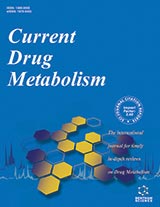摘要
胰腺导管腺癌(PDAC)是具有严峻预后的最严重的实体肿瘤之一。这种沉重的后果可以部分的由现行的可用的化疗方案的抵抗或者大量抗癌药物的失败来解释,这促进了新的有效的治疗方案的发展,例如表皮生长因子受体抑制剂。这些表皮生长因子受体抑制剂中的一些(例如埃罗替尼)被批准用来治疗肺癌,但是可用数据不足以证明EGFR靶向治疗可用于胰腺癌患者的治疗。这里我们描述了EGFR途径在胰腺癌患者中扮演的关键角色,增强EGFR抑制剂的作用的策略,及临床前或临床研究特别是最近发现的单克隆抗体和络氨酸抑制剂。一些EGFR抑制剂和其他药物的组合实现了对肿瘤诱导产生的血管生长和细胞生长的抑制。此外,埃罗替尼和吉西他滨的组合与单独使用吉西他滨相比,前者具有高的总生存数,且具有统计学意义。然而高成本、低的生存率增长,及毒性风险的增加限制了它的有效性。考虑到多个基因突变和信号通路的串扰:(1)多靶点治疗的发展;(2)预测性生物标记物的识别;(3)最可能从治疗中获益的患者可以为EGFR抑制剂的临床发展提供有价值的方向。此外进一步的临床前或临床研究被批准进行,通过分析影响表皮生长因子受体的遗传和环境改变因素及分析相同的癌症前通路,来鉴别EGFR抑制剂活性的决定因素和导致EGFR抑制剂耐药性产生的机制。这些研究将提高当前在胰腺癌中以EGFR为靶点的抗癌策略的功效和选择性。
关键词: 表皮生长因子受体,表皮生长因子受体靶向治疗,胰腺癌,耐药机制
Current Drug Targets
Title:EGFR as a Potential Target for the Treatment of Pancreatic Cancer: Dilemma and Controversies
Volume: 15 Issue: 14
Author(s): Reza Nedaeinia, Amir Avan, Mostafa Manian, Rasoul Salehi and Majid Ghayour-Mobarhan
Affiliation:
关键词: 表皮生长因子受体,表皮生长因子受体靶向治疗,胰腺癌,耐药机制
摘要: Pancreatic Ductal Adenocarcinoma (PDAC) is among the most lethal solid tumors with grim prognosis. This dismal outcome can partially be explained by the resistance to currently available chemotherapy regimens or the failure of most anticancer agents, which prompted the development of new and effective therapeutic-approaches, such as inhibitors of the epidermal growth factor receptor (EGFR). Some of these EGFR inhibitors (e.g., erlotinib) are approved for lungcancer, however available data are inconclusive for treatment of pancreatic cancer patients with EGFR-targeted-therapies. Here we describe the critical role of EGFR pathway in pancreatic-cancer, strategies to enhance the effectiveness of EGFRinhibitors as well as the preclinical/clinical studies with particular emphasis on recent findings with monoclonal antibodies and tyrosine-inhibitors. Several combinations of EGFR inhibitors with other agents illustrate inhibition of tumor-induced angiogenesis and cell growth. Moreover, combination of erlotinib with gemcitabine showed statistically significance in overall-survival, compared to gemcitabine-alone. However high cost, little survival gain and increased risk of toxicities have limited its efficacy. Considering the multiple genetic mutations and the crosstalk of signaling pathways, (1) development of multiple targeted-therapies; (2) identification of predictive-biomarkers; and (3) those patients who are most likely benefit from therapy, could provide valuable direction for the clinical development of EGFR inhibitors. Moreover further preclinical/clinical studies are warranted to identify determinants of the activity of EGFR-inhibitors and mechanisms leading to resistance to EGFR inhibitors, through the analysis of genetic and environmental alterations affecting EGFR and parallel pro-cancer pathways. These studies will be critical to improve the efficacy and selectivity of current anticancer strategies targeting EGFR in pancreatic cancer.
Export Options
About this article
Cite this article as:
Reza Nedaeinia, Amir Avan, Mostafa Manian, Rasoul Salehi and Majid Ghayour-Mobarhan , EGFR as a Potential Target for the Treatment of Pancreatic Cancer: Dilemma and Controversies, Current Drug Targets 2014; 15 (14) . https://dx.doi.org/10.2174/1389450115666141125123003
| DOI https://dx.doi.org/10.2174/1389450115666141125123003 |
Print ISSN 1389-4501 |
| Publisher Name Bentham Science Publisher |
Online ISSN 1873-5592 |
 63
63
- Author Guidelines
- Bentham Author Support Services (BASS)
- Graphical Abstracts
- Fabricating and Stating False Information
- Research Misconduct
- Post Publication Discussions and Corrections
- Publishing Ethics and Rectitude
- Increase Visibility of Your Article
- Archiving Policies
- Peer Review Workflow
- Order Your Article Before Print
- Promote Your Article
- Manuscript Transfer Facility
- Editorial Policies
- Allegations from Whistleblowers
Related Articles
-
Curcumin: A Potential Neuroprotective Agent in Parkinson's Disease
Current Pharmaceutical Design Signal Transduction through JAK-STAT and NF-κB Regulated Pim-1 Kinase: Novel Target for Anticancer Leads
Current Signal Transduction Therapy Evaluation of Tissue and Serum Expression Levels of Lactate Dehydrogenase Isoenzymes in Patients with Head and Neck Squamous Cell Carcinoma
Anti-Cancer Agents in Medicinal Chemistry Thiazolidinone Constraint Combretastatin Analogs as Novel Antitubulin Agents: Design, Synthesis, Biological Evaluation and Docking Studies
Anti-Cancer Agents in Medicinal Chemistry Drug Repositioning for Treatment of Movement Disorders: From Serendipity to Rational Discovery Strategies
Current Topics in Medicinal Chemistry Potential of Modulating Wnt Signaling Pathway Toward the Development of Bone Anabolic Agent
Current Molecular Pharmacology New Approaches to Postoperative Radiotherapy for Cancer of the Head and Neck
Current Cancer Therapy Reviews Thermodynamics and information Physics Offer New Opportunities in Cancer Therapy
Current Cancer Therapy Reviews Neuroimaging of Cancer Patients for Psychosocial Support and Patient Care
Current Medical Imaging Effects of Amine Oxidases in Allergic and Histamine-Mediated Conditions
Recent Patents on Inflammation & Allergy Drug Discovery Anticancer Agents: Towards the Future
Current Medicinal Chemistry - Anti-Cancer Agents International Conference on Personalized Medicine: “Genes and Medicine” 19-20 September 2009, Hong Kong Science Park, Hong Kong SAR
Current Pharmacogenomics and Personalized Medicine Selection of a GPER1 Ligand via Ligand-based Virtual Screening Coupled to Molecular Dynamics Simulations and Its Anti-proliferative Effects on Breast Cancer Cells
Anti-Cancer Agents in Medicinal Chemistry Current Advances in Retroviral Gene Therapy
Current Gene Therapy Dynamic Biomarkers of Response to Antiangiogenic Therapies in Colorectal Cancer: A Review
Current Pharmacogenomics and Personalized Medicine Small Molecule Inhibitors Targeting Key Proteins in the DNA Damage Response for Cancer Therapy
Current Medicinal Chemistry State of the Art Clinical Efficacy and Safety Evaluation of N-Acetylcarnosine Dipeptide Ophthalmic Prodrug. Principles for the Delivery, Self-Bioactivation, Molecular Targets and Interaction with a Highly Evolved Histidyl-Hydrazide Structure in the Treatment and Therapeutic Management of a Group of Sight-Threatening Eye Diseases
Current Clinical Pharmacology Design, Synthesis and Cytotoxicity Evaluation of New 3, 5-Disubstituted-2-Thioxoimidazolidinones
Anti-Cancer Agents in Medicinal Chemistry Morin Inhibits Ovarian Cancer Growth through the Inhibition of NF-κB Signaling Pathway
Anti-Cancer Agents in Medicinal Chemistry Mechanisms Used by Human Papillomaviruses to Escape the Host Immune Response
Current Cancer Drug Targets


























